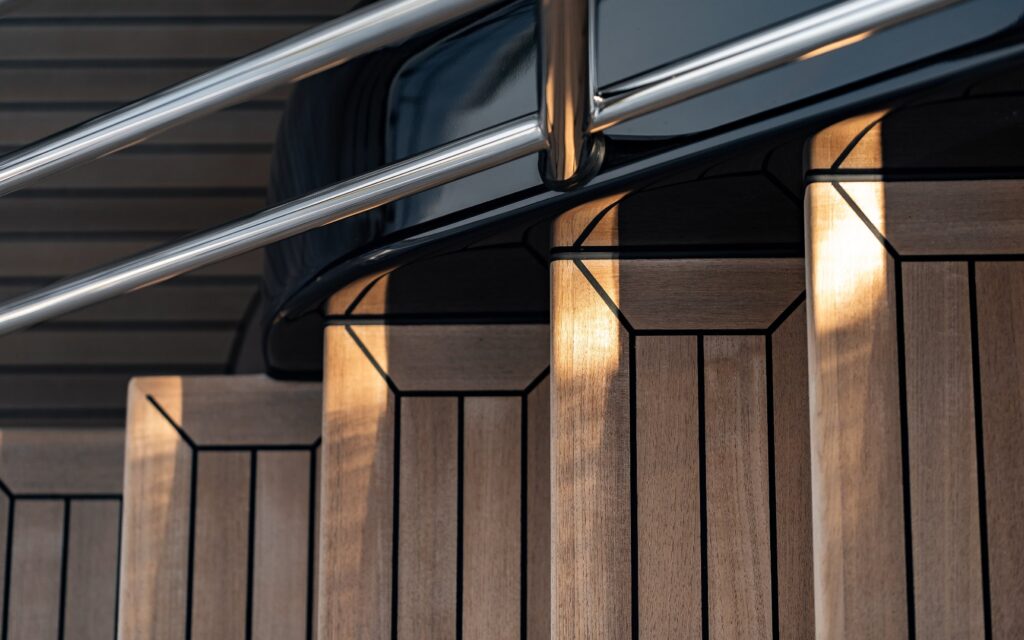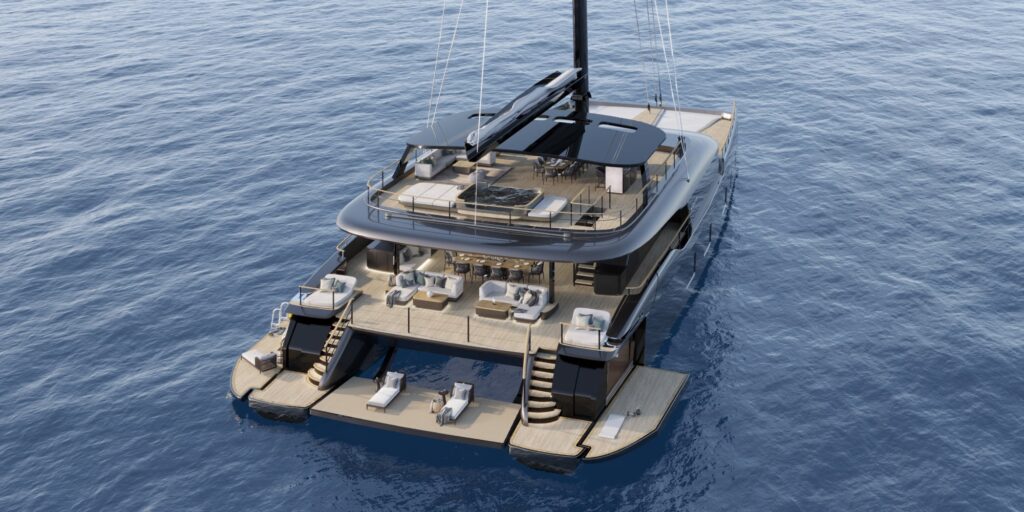Ocean Independence is delighted to have the opportunity to sit down with UK-based superyacht furniture designer Edward Johnson to talk about the past, present and future of his work.
A skilled artisan with over a decade of experience in his trade, luxury furniture designer Ed Johnson is no stranger to the yachting industry – today his pieces can be found on some of the world’s most well-known superyachts.
Off the water, Ed has exhibited his bespoke furniture widely and has been recognised within the industry for achieving excellence within design, innovation, and craftsmanship. Previous accolades include the Wood Awards (bespoke furniture category) and three prestigious Bespoke Guild Marks, awarded by The Furniture Maker’s Company.
Ed has also been selected by Winch Design founder Andrew Winch as part of the ‘Under Winch’s Wing’ initiative, created to support outstanding small craftsmanship business throughout the Covid-19 pandemic.
OI: How has the past year been for you?
EJ: I’m looking out of the window of my design studio in the sailing village of Bosham and feeling a real sense of optimism. We are all hoping for a brighter tomorrow as we inch closer to a summer of all those experiences that have been sorely missed. It has been a cold winter in the workshop – I’ll be pleased to see the back of it! It has also been a decidedly solitary year here, as I suspect it has been for most artisans across the world. I feel so lucky to have a workshop with a view of the West Sussex countryside, where I have lived for more than 20 years, and as life begins to open up again, we can start to plan. We’ve booked our exhibition season, with local and international shows pencilled in the diary. I’m very much looking forward to talking to clients and interested folk about our latest designs and techniques.
OI: What would you say are the key skills needed for producing a high-end cabinet?
EJ: Malcolm Gladwell’s aphorism that it takes 10,000 hours to become an expert is a woeful underestimation when it comes to cabinet making. From the moment I picked up my grandad’s chisels at the age of 18, until the day I started to fully understand my medium and my own ability and dexterity, it was closer to 200,000 hours of training and professional practice. There’s a lot more to being a cabinet maker and craftsman than the romantic idea most people have – I say that from the mindset of being a perfectionist and my own worst critic. There have been an awful lot of expletives uttered through that time. It’s not as if you can just press the backspace button. Some mistakes set you back weeks; some you just have to live with.
OI: Which projects bring you most pleasure?
EJ: Of course, there are moments and projects that bring you great joy, and perhaps none more so than working on super high-end creations for yachts and luxury interiors. A standard piece takes a couple of hundred hours to make, while an amazing piece that makes the hairs on the back of your neck stand up takes a thousand hours. Fortunately, we work at the finer end of the industry and we are increasingly being commissioned to work on some extraordinary projects. These are projects that have allowed me and the team the time to focus our craftsmanship skills and cherish our position as innovators in the industry. From the family-tree boxes that take over 500 hours to finesse, to some extraordinary chairs we recently made, each one taking three months – yes, three months for each chair – we’ve been able to indulge and progress our ability as craftsmen and further explore the boundaries of furniture making. When you get to work at this level, it isn’t just a job, it’s a passion and a craft that we’re grateful to be part of. In a world full of mass-produced objects, it’s nice to be part of a traditional skill that will continue to stand the test of time because there are people out there with patronage that are willing to support such craftsmanship.
OI: What are the biggest challenges you face?
EJ: When I think of those 200,000 hours, in truth it’s a whole lifetime of adopting a mindset of challenging oneself and exploring beyond one’s comfort zone. My love of making is very much in my blood. Much to the frustration of my parents and teachers, I was always trying to test the boundaries of what I could do and constantly asking ‘why’ when given an instruction. My wife would say that I’m unemployable because of the number of questions I ask! A questioning nature has constantly motivated me to understand the basic principles of cabinet making in great depth. If you can deconstruct the building blocks of how timber works, moves, bends, joins etc, you can start to reconstruct it into new forms that haven’t been tried before.
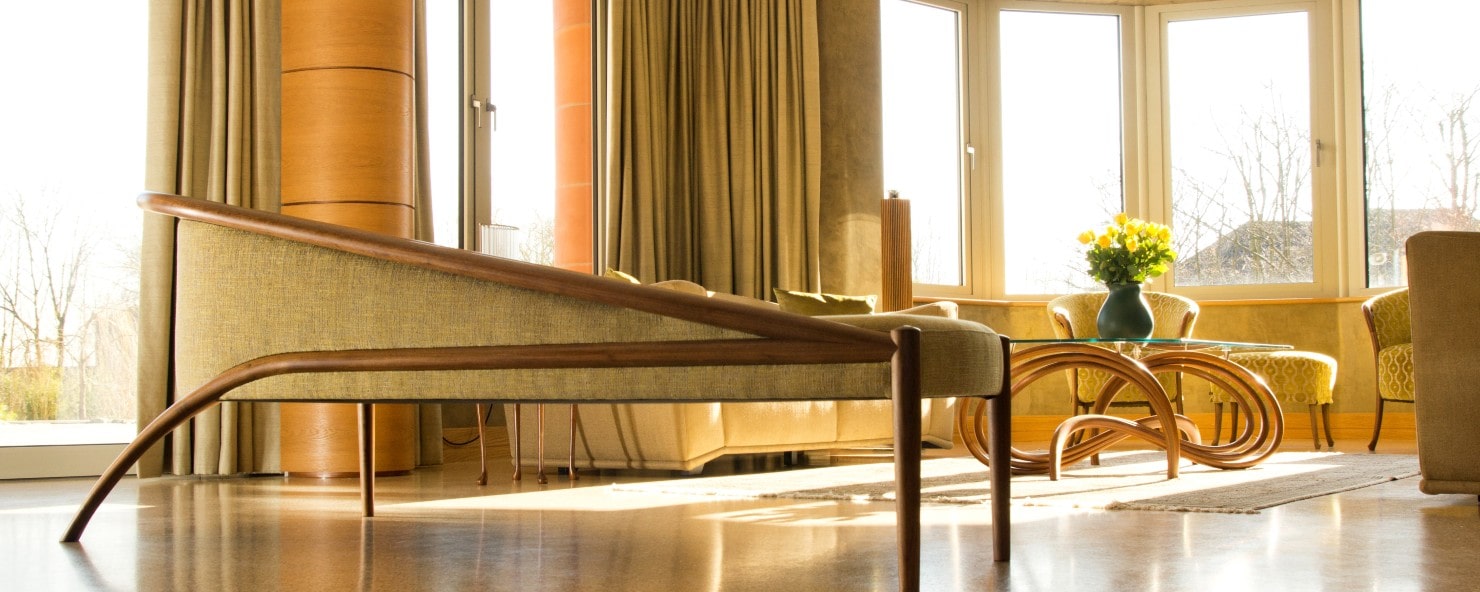
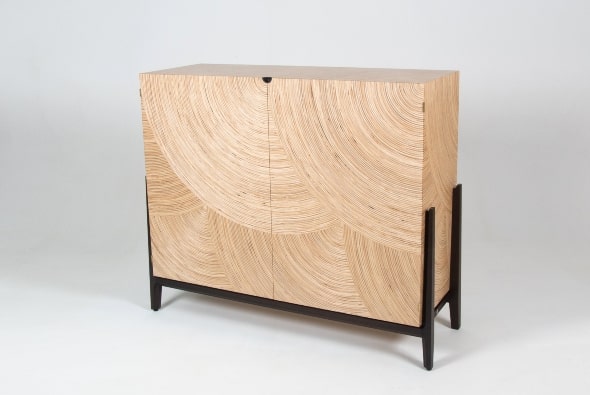
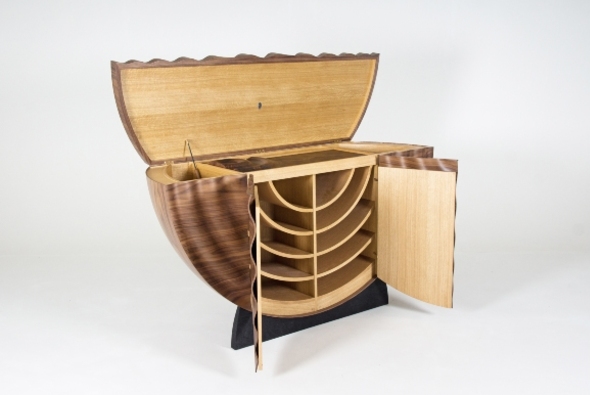
OI: Are there any innovations that you are working on at the moment?
EJ: We’ve got an area in the workshop dedicated to failed prototypes! Currently, it hosts a lot of failed steam-bent components. Typically, I’ve favoured laminating as a process of bending timber as it is more accurate, and I find it to be more consistent. However, this doesn’t lend itself to batch-produced designs as it is very time consuming. Over the past couple of years, we’ve been mastering the technique of steam bending and very recently we’ve been playing around with the idea of double steam bending, and even steam bending and laminating within the same component. Given the number of split components upstairs, I’d say we’re very much still learning. As a seasoned woodworker, I wholeheartedly agree that there is something quintessentially romantic about steam bending; seeing a piece of 60mm x 60mm timber bend around a former like a piece of dough fills you with joy every time you see it. It is always a bit of a shame that you have to do it at such speed and under such pressure – you almost want to watch it in slow-mo. It’s like restraining a wild animal – you have to work quickly, accurately, and without panic, and then once it’s all strapped into position there is a sense of achievement and calm.
OI: Has the pandemic led to any changes in your business?
EJ: As the UK came to a grinding halt during the first lockdown, we did have a brief period of reflection in the business, and I tried to make sure that the team used their time wisely until we felt it acceptable to return to the workshop. We developed an Eco range that utilises all our beautiful hardwood offcuts, which has in turn created a position for a young apprentice to join the team – all round, a very satisfying result. After the initial jolt, we quickly found that the workshop was busier than ever, with our loyal patrons going out of their way to keep our team together and doing what we do best – crafting fine furniture. With our exhibition stream of work closed, private and commercial clients have been amazing in supporting and promoting us. The reputable Winch Design Studio has been championing our work alongside other artisans through its ‘Under Winch’s Wing’ initiative, which we joined last year. The more experienced I get, the more processes evolve, enabling me to deliver a complex and fantastic solution. This is a high-pressure job, but Winch gives you great clarity and the time to produce.
OI: Would you say creativity and collaboration go together?
EJ: I love collaborations that really do push boundaries. Much of the work we do for Winch has stretched me creatively, pushing me to create things I did not really know were possible. But through careful planning and ingenuity, we have delivered. Keeping to budgets when working on superyacht projects is crucial, but occasionally there is a project that really raises the bar and makes the struggle of creativity all the more worthwhile. For those jobs for yachts that look impossible at first, we make prototypes, which themselves can take weeks to produce. It’s a process of thinking and developing, then rethinking and developing again, so we can be sure of delivering the ultimate in woodworking. As with any customised project, we start with a blank piece of paper and find inspiration from initial discussions with the client. A table, say, needs to stand up to the rigours of use – red wine, crayons, and a dropped fork – but also meet the specific aesthetic requirements of the client.
OI: What are you looking forward to for the rest of the year?
EJ: There is a lot of undiscovered talent out there, and my task very soon will be gently to expand my business with additional engaged people. Artisans and woodworkers are so important to our future. I am also currently talking with artisans from all over the UK to discuss the possibilities of collective marketing and working together more closely. There is an undiscovered matrix of small, independent and talented artisans across the UK, and we all need the support of clients to develop and maintain traditional crafts for the enjoyment of all. For those that have supported us, we owe a huge thank you, and for those that are considering commissioning an artisan, please do.



